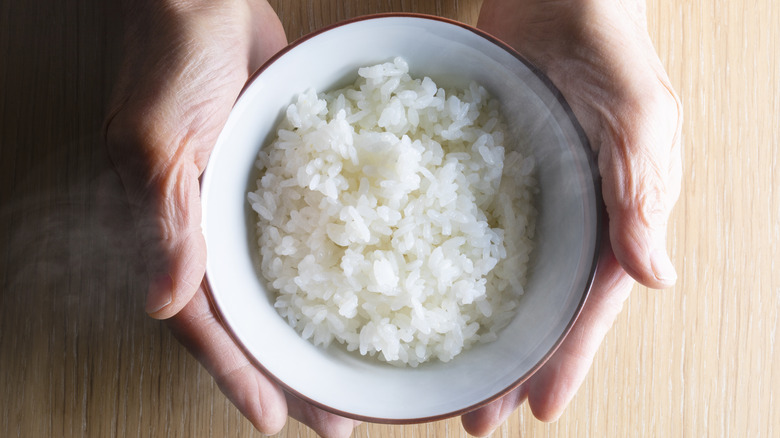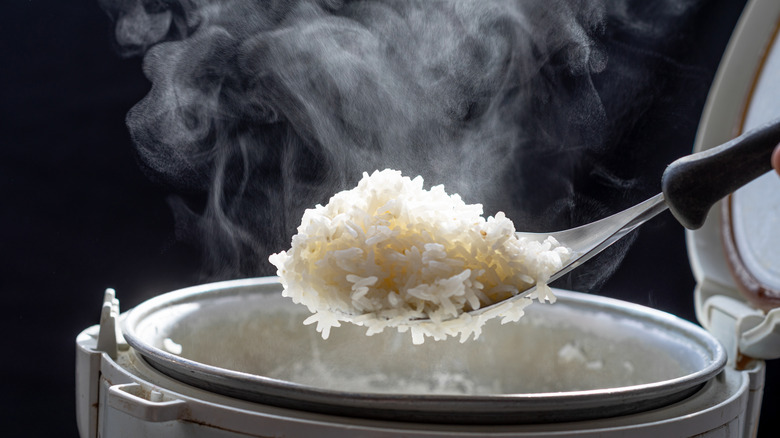Boiling Water Is A Sticky Mistake For Rice
Unless you're making Thai mango sticky rice, gooey or dense rice is not the desired texture we seek for a bowl of rice; We want our rice light and fluffy. So, when it comes time to cook it, simmering is a much better method than boiling.
When you boil water, it reaches a temperature of 212 degrees Fahrenheit, which causes continuous and vigorous bubbles that are akin to stirring it with a spoon; The excessive movement releases the starches responsible for making rice sticky and you will see them form a bubbly mass at the top of your pot. Boiling also has a higher rate of evaporation, which results in undercooked rice or an unpleasant combination of sticky, scorched, and crunchy rice.
Simmering rice, which produces a similar product to steaming, occurs at lower temperatures, between 185 and 205 degrees Fahrenheit, generating small bubbles that often don't break the surface. The process is slower and more deliberate, allowing for a steadier rate of absorption and helping it cook more evenly.
How to simmer rice
While you can bring water to a simmer, bringing it to a boil first is an important step in rice cooking because it generates steam that aids in the slow and even evaporation of cooking liquid. To simmer rice, you can either bring both the water and rice to a boil or bring the water to a boil before adding the rice.
Once the water reaches a rolling boil, add salt and then reduce the heat to the setting that creates a simmer. Not all burners are the same, so you should experiment to gauge which heat setting corresponds with a simmer before cooking your rice.
When you reduce the heat, you'll see the rolling boil taper into a gentle bubble. Cover your pot and simmer the rice for the recommended time without lifting the lid. When you've completed the cooking time, remove the pot from the heat and let the rice sit covered for at least 10 minutes before opening the lid and fluffing it with a fork.

